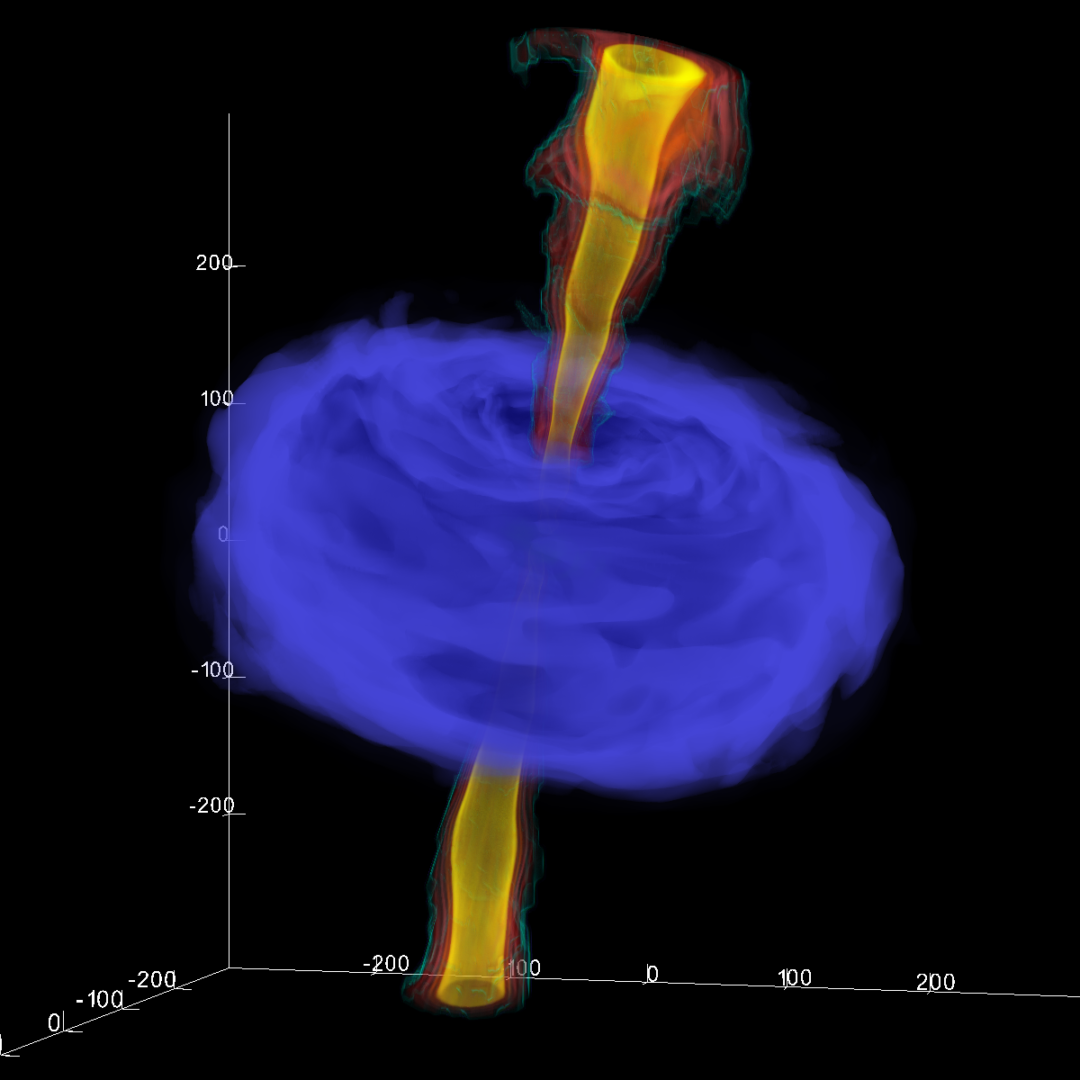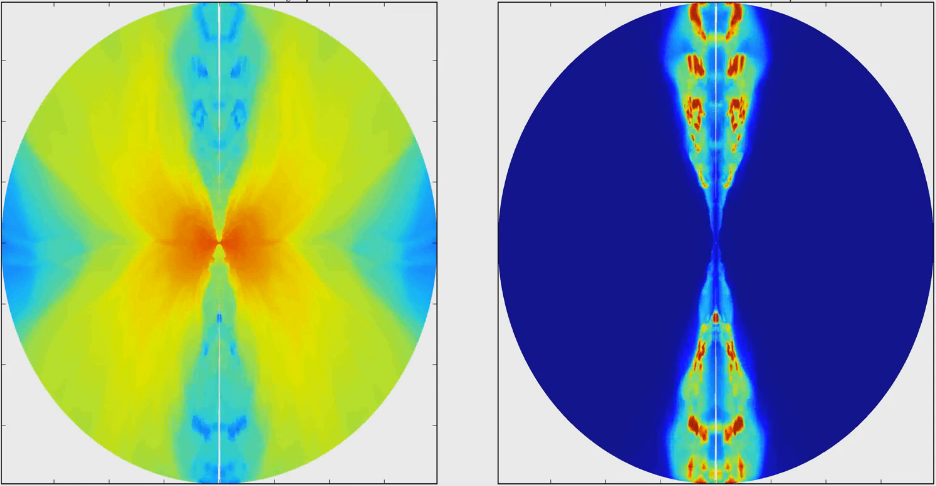You must have noticed the spectacular image shown above. The purple haze shows the radio emission of relativistic jets belonging to the nearby galaxy Centaurus A. Here the object is projected in its actual size as it would be seen on the sky if its light were visible to the human eye. This stunning example spans 1,000,000 (!!!) light years across the sky, and many more jets such as these can be found. (If you’re wondering about that shining globe on the left, that’s the full Moon for scale) But what creates those jets exactly? At the center of this huge system in Centaurus A (at the small dot in…
Read More >>Publication and Press Coverage: Rapidly Spinning Black Holes Launch Precessing Jets
Throughout this past year, I have been working in Sera’s group, alongside Matthew Liska (PhD of Michiel van der Klis), on analyzing the largest black-hole (BH) accretion simulations ever performed. In collaboration with Alexander Tchekhovskoy (Northwestern University) and Adam Ingram, we studied tilted accretion of magnetized matter onto a rapidly spinning BH, and the resulting relativistic jets. For the first time, we have demonstrated in simulations that relativistic jets precess along with the tilted accretion disk around the BH spin. This month, our first article on the results was accepted for publication in MNRAS Letters. We have worked on a press release, which was published yesterday by NOVA (network group…
Read More >>2D simulation of an accretion disk with jet
Ever watched a black hole launch matter into space? Me neither, but this simulation comes pretty close! The video below is a visualization of a high resolution 2D simulation of the accretion disk of a black hole, made by me using the state-of-the-art GRMHD* code called HAMR** on a single GPU. The simulations are partly refined to give an effective resolution of 600×600 pixels. Units are in terms of Rg (gravitational radius), so the simulation applies to any black hole mass. The accretion disk starts out with a poloidal magnetic flux, which powers the jet once the accretion starts. The left plot shows the density distribution, clearly visualizing the accretion…
Read More >>New brain on the team
Hi, My name is Casper. Besides the usual astrophysics conundrums I’m also interested in how the brain works. Neuroscience is a bit like astrophysics in that we are pretty good in imaging stuff but still limited in our understanding. To illustrate this, here is a picture of my own brain made with a technique called Magnetic Resonance Imaging: Even though we don’t completely understand how the brain works, my own brain will (hopefully!) come in handy during my Master project with Sera. I’m analyzing the relativistic jet generated by an accretion disk that is tilted with respect to black hole to which it belongs. We’re using state-of the-art techniques to…
Read More >>



